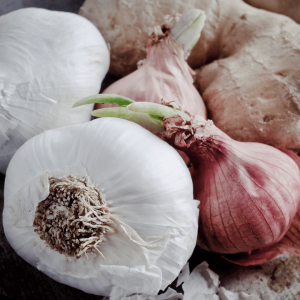
As an Amazon Associate, I earn from qualifying purchases. That means I earn commissions from my sponsored links or I make money when readers (you) purchase items through my links. Your purchase allows me to continue working as a stay-at-home dad who moonlights as a farmer and a musician. Needless to say, this post contains affiliate links.
If there’s one good thing to come out of the pandemic, it’s the fact that a lot of people started making backyard gardens in small spaces. With nothing much to do, a lot of people shifted their attention to controlling the environment they were in.
A lot of rooms were remodeled. A lot of anonymous people became overnight stars. And a lot of bored people with enough space and money became “plantitos” and “plantitas”.
But making backyard gardens in small spaces isn’t a new thing. People have been doing it since time immemorial. It’s just that having camera phones and access to the Internet has made it more mainstream.
Well, what now?
It’s been 2 years since they lifted restrictions. Are there still “plantitos” and “plantitas” out there pursuing the hobby? I know there are a lot of people who had thriving backyard gardens who suddenly gave up when other distractions presented themselves to their lives.
Work, family life, going out, etcetera, etcetera, is it even still cool to have a backyard garden? Are people still going to listen when you passionately talk about what’s growing in your garden?
Now, most of the people who also gave up on the hobby were taking care of ornamental plants. People like me, can’t really afford to focus on those.
Our main goal is to have a backyard garden that produces food. And the people who devoted their time to making backyard gardens in small spaces that yielded vegetables and other food items continue to do so to this day.
We’ve got a small, community supporting each other where we discuss how our backyard gardens are and what to plant next. We have discussions about planting solutions, fertilizer, farming adjacent topics, etcetera. It’s fun if you’re truly committed to growing food.
Is it Too Late to Start Making Backyard Gardens in Small Spaces?
No.
You can start the hobby anytime. I started making mini-gardens in 2012. I just loved the idea of caring for things and reaping my reward at the end in the form of harvesting and eating food I had grown from the ground up.
Let’s say you only have a space about 6 feet by 4 feet available to remake into a garden. Is it possible?
Yeah!
I basically had roughly that size to start my mini garlic and onion garden with.
Yeah, I started with the easiest plants to create a mini garden with.
The First Plants I Planted During the Pandemic: Garlic, Onions, and Ginger.
Yeah.
I saw a Youtube video on how to grow garlic in a cup and decided to act on it. I got a few bulbs of garlic from the market, a few plastic cups from the grocery store, and some tissue and started with that.
All I had to do was remove each individual clove and place it inside a separate cup with a moist square of tissue at the bottom. I then placed another square of tissue on top and moistened it and that was that.
It didn’t take long for the individual garlic cloves to start taking root. I swear, you don’t need a “green thumb” to grow garlic this way. I started my experiment with 20 cloves and quickly made 200 more after my initial success.
I then had the first hundred fifty cloves transferred to the farm for planting on the ground. The rest, I kept for home use.
Onions were a bit more difficult for me but I managed to grow a few with ease.
Perhaps the easiest to grow was the ginger. I just chucked a few in individual pots and they sprouted quickly.
There’s another reason why I chose to grow these three. At that time, I was still hoping that my small kagikit business would resume so I was preparing myself to cut down on production costs by growing some of the ingredients (ginger, onions, and garlic) myself.
Who knows, I might still have the chance to resurrect that business with the number of onions, garlic, and ginger plants I have at the farm.
Wait, Did I Say We Had a Farm?
Yes. Although the main idea I want to push here is about making backyard gardens in small spaces, I have the unique opportunity to expand mine into a bigger area. I know not a lot of people are as fortunate as I am but the possibilities are endless if you put your mind and heart into it.
Now the farm my wife owns doesn’t normally grow vegetables. We have fruit trees. The vegetable garden I eventually grew came out of necessity. Before I came into the picture, the farm only had coconuts, durian, mangosteen, and other fruit trees.
I saw the open, unused areas and decided to fill those up with easy-to-grow vegetables.
We now have okra, eggplants, chili, pechay, malunggay (moringa), tomatoes, and other vegetables (including onions, garlic, and ginger) growing alongside those trees.
Moving on. Let’s go back to smaller spaces.
Plan Your Space Efficiently
You can increase the size of your available space by planning it efficiently. Because of the pandemic, I was forced to just use a small space for my experiment which quickly grew to require more square footage.
But, if you’re just doing this as a way to create enough supply for you to have vegetables that you can easily harvest and cook for your home, then a small space is all you’ll need.
To increase my space, I used chairs to mount the smaller plants on top of the more developed ones. That almost doubled the space available for me. Another way, (which I haven’t done yet), is to incorporate trellises or do vertical planting.
I simply didn’t use trellises in my backyard garden then because I didn’t need to just yet. And when I finally moved to planting tomatoes, I decided to do it large-scale instead of keeping it in my backyard.
But other people have comfortably grown enough tomatoes from 2 to 3 plants in their backyard. The next time I have the opportunity, I’ll do that. My wife has another place, near the beach, that I want to develop in the city that might be perfect for a small garden.
Moving on.
Gardeners and Plants Love the Sun
Ok maybe this doesn’t apply to everyone but the plants I planted love the sun.
For best results, pick an area that’s facing south or southwest for maximum sunlight exposure.
Your garden should at least get 6-8 hours of sunlight daily. The more direct, the better. If the sun is too harsh in your location, make sure you have sunscreen for you and your plants. I’m talking about SPF 50 or higher for your skin and mesh nets for your plants.
While you’re at it, invest in overalls, long-sleeved shirts, gloves, boots, wide-brimmed hats, and sunglasses. The first few items are for practical reasons to cover as much skin as possible and the last one is to look cool while digging up dirt.
Believe me, you’ll want to protect yourself from the sun as much as possible. What’s the point of having a cool garden if you’re just gonna end up looking like a dried-up lizard for all your efforts?
PS.
Although I’m a freelancer who makes a living at night as an SEO Specialist and Copywriter, I’m a morning person.
I usually started tending to my small garden at 4 in the morning to avoid the sunlight and to have an excuse to sit back and relax with a cup of coffee when the sun came up.
Get Your Hands Dirty: Prepare the Soil
I started my small backyard garden with plastic cups, empty containers, and tin cans with squares of moist tissue. That setup was perfect for beginning the rooting process.
But you’ll eventually need to transfer those plants into bigger pots with good-quality soil. At this point, you’ll have to get your hands dirty. If you don’t want sandpaper-rough hands, invest in a good pair of gardening gloves.
Now, there are two ways to go about this: prepare the soil yourself or get a good-quality potting mix. There’s a lot of good gardening soil available that you can buy from reputable sellers out there.
You may also want to enrich your existing soil with compost. You can buy good compost or create compost yourself. Either way is fine and don’t let other people tell you what you should or shouldn’t do to remain pure to the “gardening” culture.
When starting this hobby, you’ll find yourself surrounded by a lot of enthusiastic people who are in the same boat as you. You all have the same hopes, dreams, and visions, of what your small garden is going to look like after a week, a month, or a year from now.
I’m one of those people. I continue to have that level of enthusiasm despite having worked in gardens since I was a child. You’ll learn to love gardening the longer you stay in the hobby. And this hobby can become a lifestyle.
As long as you’re growing things, you’re fine.
Now get those hands dirty.
Pick the Easy Ones First
Just as easy as it is to fall in love with the hobby, it’s also easy to fall out of it. And most people who stop usually do so because of failure.
A lot of people quit doing something because they face early failures. And you can either bounce back from it or not. It’s 50/50.
So, to minimize the chances of you quitting early, why don’t you take on the easy things first before tackling the hard ones? Remember, I started with garlic. I didn’t have much experience in making backyard gardens in small spaces and I knew that I needed an easy win to start the hobby.
Before becoming a backyard farmer, my only experience in planting was planting coconuts in Siocon and pechay, upo, and eggplants as an elementary pupil in LSC. I spent a great deal of time away from plants because I was busy building my career in BPOs during my early 20s and 30s.
I started becoming more interested in backyard farming, when I moved to Davao. And even more so when the pandemic hit. Nowadays, I can legitimately say I’ve become the city boy farmer I’ve always wanted to be.
Here’s a list of easy vegetables to grow when you’re just starting with your backyard garden.
- Garlic (obviously)
- Onions
- Ginger
- Okra
- Tomatoes
- Pechay
- Herbs (like basil, parsley, chives, and mint)
- Pepper (and when you get good enough, try planting the more difficult, exotic ones)
Some that I haven’t really experimented with but are highly suggested include:
- Radish
- Spinach
- Green beans
- Cucumber
And once I get around to setting up a hydroponic or aquaponic system, cabbages, lettuce, and others. But that’s something I’m still thinking about doing in the future because I want to make sure I do it right.
Water Your Plants Regularly
Plants need water. ‘nuff said.
When they’re small, you might want to just mist them. When they’re bigger, get a hose or a sprinkler system.
Make sure that watering them is a convenient chore for you so that you’ll love doing it. As much as possible, invest in a good hose or a sprinkler system. Believe me, it can get old fast. Or it could become a welcome addition to your daily ritual.
For me, watering my plants is therapeutic. It puts me in a Zen mode just like when I wash the dishes or write.
If you have enough space and resources, you might want to turn your roof drain into a rainwater collection system so as not to impact your water bill as much. You’ll just have to make sure that you make your rainwater collection system mosquito-free.
But we can talk about that in a future post.
Just collect as much water as you can from free resources like rain or if there’s a stream nearby, get water from there. Try not to water your plants using water from your faucet because there’s chlorine in it.
If you have to, make sure you let that water stand for a day or two or treat it in a way that removes as much of the chlorine as possible.
Always check your soil. Keep it moist, not waterlogged.
And the hotter it gets outside, the more frequently you should water. So make sure you have lots of it stored for your plants to thrive.
Mulching
Another way to retain moisture in your soil is to use mulch at the base of your plants. I learned that one when I was in elementary school (Thank you Mr. Ananias Leona, may you rest in peace).
Mulch also helps suppress weed growth because you’re basically covering them up and not letting them get the chance to have some sun. some extreme forms of “mulching” include covering the entire base of the plant with plastic.
I have no qualms with that. If it works, it works.
Last but not least, mulch helps regulate the temperature of the soil. It also keeps the soil underneath soft, moist, and breathable for your plants.
You can use straw, shredded leaves, rotting plant material, or in our case, coconut husks as mulch. As I mentioned above, others take a more extreme route and cover the entire base of the plant with a plastic sheet.
Smaller plants, the ones that are barely a few weeks old can benefit from covering up with old bottles to create a mini greenhouse effect. It increases the humidity, traps all the moisture, and prevents other external factors from damaging your new, budding plants.
Have Fun Doing Regular Maintenance Work
Perhaps the most fun part about gardening is entering Zen mode when you’re performing maintenance duties. I usually zone out when I do routine stuff like gardening, doing household chores, or writing.
It gives me a certain clarity, purpose, direction, and other positive thoughts and feelings.
This is what gardening can offer for you as you do regular maintenance work. Some people find it bothersome. But if you find the fun in it, I bet you’ll enjoy it like most successful people do.
At the start, maintenance will involve misting your plants. It’s easy work. Checking on the root development is easy work too. Transferring them to a bigger pot, a bit less easy but doable. Placing pots under the sun, sure easy work.
All of these things are easy if you do regular maintenance work. And being consistent will help build character. Character that you’ll need to tackle harder things to do as your hobby grows.
Keeping your garden tidy by removing weeds, raking the debris, breaking up the soil for aeration, mulching, these are just some of the things you’ll need to do. Checking your plants for pests and diseases will also come into play later on.
Fertilizing, treating diseases, the list goes on and on. Oh, I don’t want to forget pruning. Pruning systematically helps plants thrive and you’ll have to learn how to do it properly to get the best results.
Last but not least, harvesting mature vegetables. Make sure you grow enough to feed your family and perhaps have enough for the neighbors. Keep your garden manageable in size so as not to produce more food than you need which might result in food wastage.
Learn as You Go
The beauty about gardening is that there’s always an opportunity to learn more. And like any serious hobby, if you put the time and effort into it, you’ll notice certain ways to do certain things or learn more from others that could help improve your skills.
As far as learning goes, there are a lot of resources available out there. Gardening has become cooler because of Tiktoks, Youtube videos, and Facebook reels. It has gone mainstream and is no longer the pastime of housewives and the elderly.
Don’t limit yourself to what you see on social media. Although highly entertaining these resources are mildly educational. If you really want to learn more about plants, gardening, and making backyard gardens in small spaces, invest in books.
Better yet, invest time in visiting small farms, people who have backyard gardens, plant sellers, and anyone who’s involved in plants. They have stories to tell. Listen closely and you can get a valuable lesson or two.
The key here is to immerse yourself completely in the hobby to get the best results. It’s worth it.




1 thought on “Making Backyard Gardens in Small Spaces”